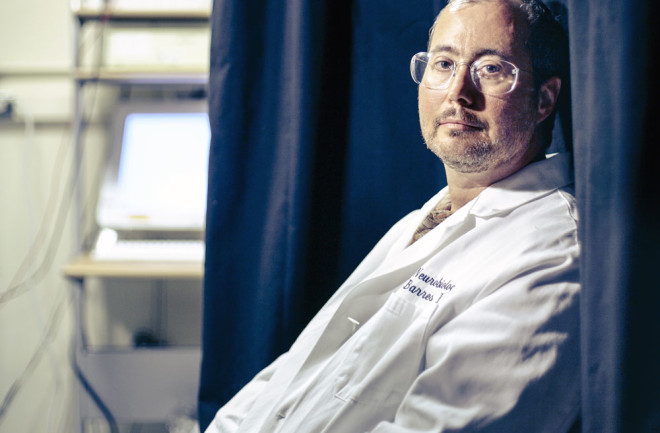A model of Ben Barres’ brain sits on the windowsill behind his desk at Stanford University School of Medicine. To a casual observer, there’s nothing remarkable about the plastic lump, 3-D-printed from an MRI scan. Almost lost in the jumble of papers, coffee mugs, plaques and trophies that fill the neurobiologist’s office, it offers no hint about what Barres’ actual gray matter has helped to accomplish: a transformation of our understanding of brains in general, and how they can go wrong.
Barres is a pioneer in the study of glia. This class of cells makes up 90 percent of the human brain, but gets far less attention than neurons, the nerve cells that transmit our thoughts and sensations at lightning speed. Glia were long regarded mainly as a maintenance crew, performing such unglamorous tasks as ferrying nutrients and mopping up waste, and occasionally mounting a defense when the brain faced injury or infection. Over the past two decades, however, Barres’ research has revealed that they actually play central roles in sculpting the developing brain, and in guiding neurons’ behavior at every stage of life.
“He has made one shocking, revolutionary discovery after another,” says biologist Martin Raff, emeritus professor at University College London, whose own work helped pave the way for those advances.
Recently, Barres and his collaborators have made some discoveries that may revolutionize the treatment of neurodegenerative ailments, from glaucoma and multiple sclerosis to Alzheimer’s disease and stroke. What drives such disorders, their findings suggest, is a process in which glia turn from nurturing neurons to destroying them. Human trials of a drug designed to block that change are just beginning.

